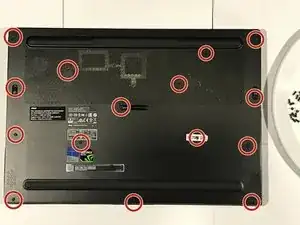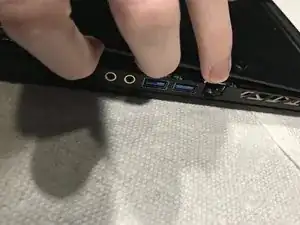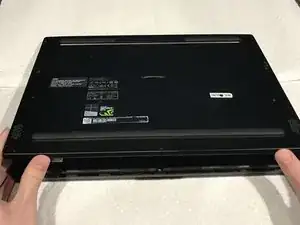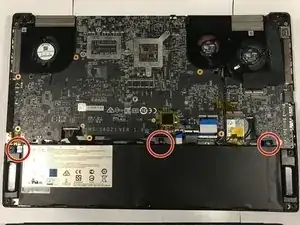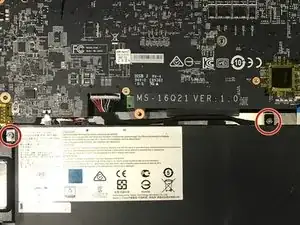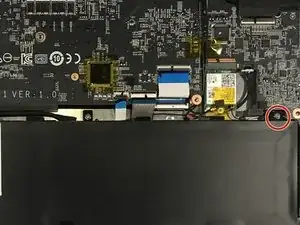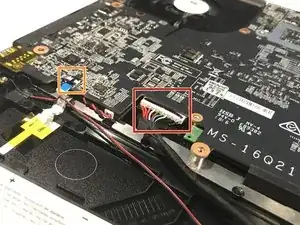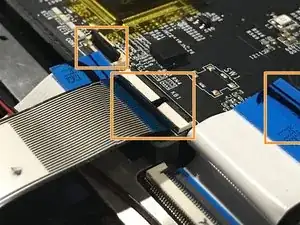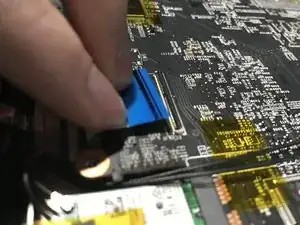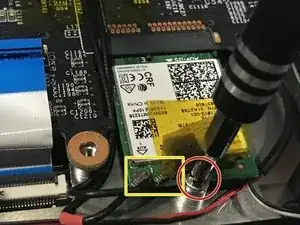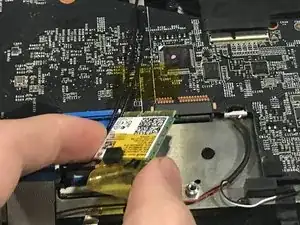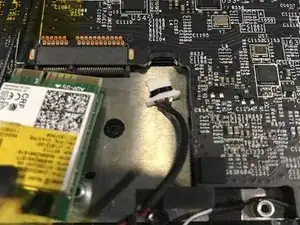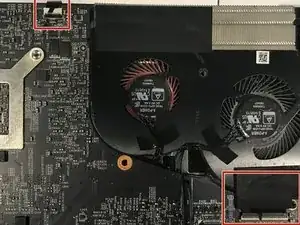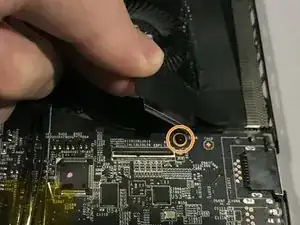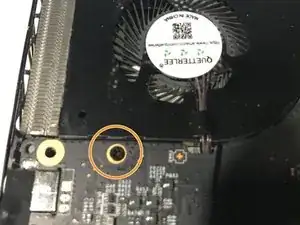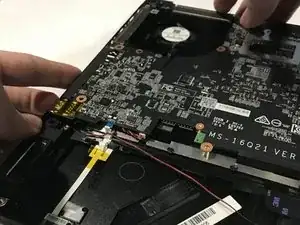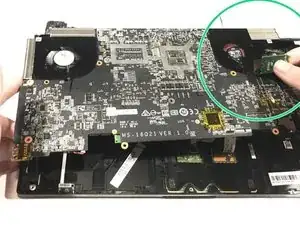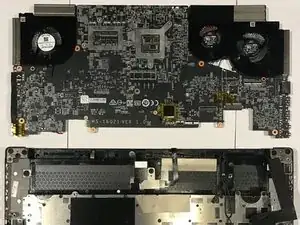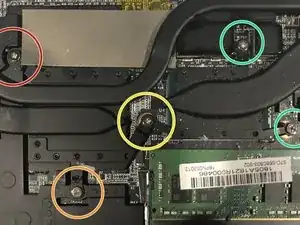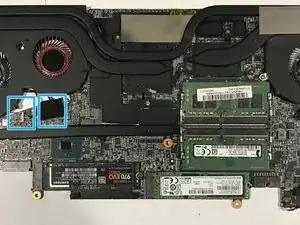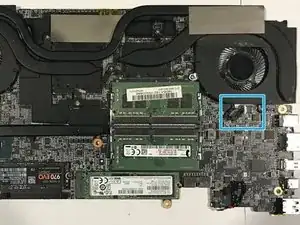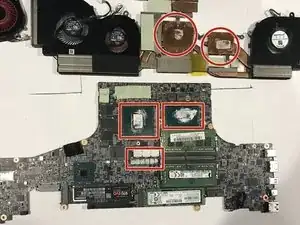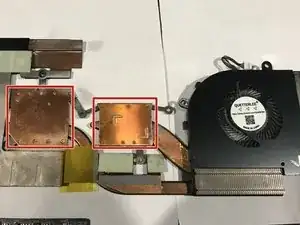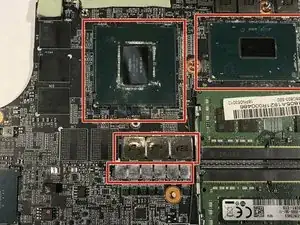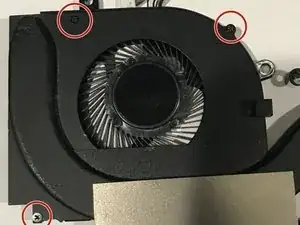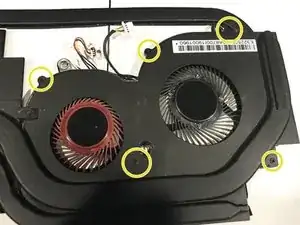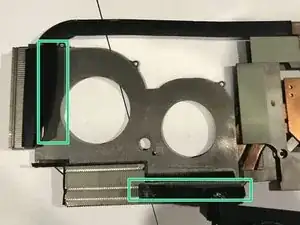Introduzione
Utilizza questa guida per sostituire una qualsiasi delle ventole del laptop MSI GS65 Stealth Thin 8RE.
Le ventole sono il sistema principale di raffreddamento della CPU. Ci sono due ventole su ciascuno dei due fianchi del laptop per espellere l'aria calda. Per capire se dovete sostituirne una o entrambe, utilizzate il Dragon Center MSI per controllarne la velocità e il funzionamento. Se una delle due ventole gira più veloce per compensare, allora significa che quell'altra non funziona. Se il portatile ha delle temperature fuori dalla norma e le ventole non stanno girando ad alti RPM, significa che dovete sostituirle entrambe.
Al passaggio n. 8 di questa guida dovete applicare la pasta termica al portatile. Per evitare di danneggiare il vostro portatile utilizzandone troppa, vi prego di guardarvi questa quida prima di cominciare: Thermal Paste Instructions . Assicuratevi inoltre di spegnere il vostro portatile e di scollegare quasiasi cavo di alimentazione dallo stesso.
Strumenti
Ricambi
-
-
Rimuovi le 15 viti Phillips #00 da 6 mm dalla cover posteriore.
-
Rimuovete con delicatezza la cover posteriore aiutandovi con delle leve in plastica. Iniziate dalla parte frontale fino ad arrivare al lato cerniera.
-
-
-
Svitate le tre viti Phillips #00 da 4 mm che fissano la batteria.
-
Sollevate parzialmente la batteria facendo attenzione.
-
-
-
Scollegate il connettore della batteria tirandolo con piccoli movimenti.
-
Sbloccate e scollegate i vari cavetti bianchi e blu dalla scheda madre sollevando i piastrini di bloccaggio neri dei connettori ZIF con una leva in plastica.
-
Dopodiché tirate delicatamente il cavo.
-
-
-
Svitate la vite Phillips #00 da 4 mm che fissa la scheda WiFi.
-
Fate molta attenzione a non scollegare i cavetti quando sollevate la scheda WiFi, perché potrebbe risultarvi molto difficile ricollegarli.
-
Sollevate leggermente la schedina e fatela scorrere fuori dalla propria sede per rimuoverla.
-
Aiutandovi con una pinzetta o con le dita e facendo molta attenzione, scollegate il cavetto con connettore bianco che sta accanto alla scheda WiFi.
-
-
-
Scollegate gli ultimi connettori dalla scheda madre allo stesso modo di quelli blu che avete scollegato prima.
-
Rimuovete lentamente il cavo tenuto dal nastro adesivo nero dalla ventola.
-
Svitate le due viti Phillips #00 nere da 6 mm posizionate sotto a ciascuna ventola.
-
-
-
Estraete delicatamente la scheda madre.
-
Fate passare la scheda WiFi attraverso il foro nella scheda madre che si trova tra la ventola della GPU e i circuiti stampati.
-
-
-
Capovolgete la scheda madre.
-
Accanto a ciascuna vite ci dovrebbe essere un numero, svitate le viti in quell'ordine e riavvitatele allo stesso modo (non invertite l'ordine quando rimontate). Se non siete sicuri di quale sia l'ordine, dovrebbe essere questo:
-
Prima vite: rosso
-
Seconda vite: arancione
-
Terza vite: giallo
-
Quarta e quinta vite: verde, l'ordine qui non importa
-
Scollegate i cavi di ciascuna ventola: 2 per la ventola della GPU e uno per la ventola della CPU. Uno dei due cavi della GPU si trova sotto a un nastro adesivo nero.
-
-
-
Ora separate le due parti con delicatezza.
-
Rimuovete la vecchia pasta termica utilizzando uno straccetto imbevuto di alcol isopropilico.
-
-
-
Per sostituire la ventola della CPU, che è quella che si sostituisce di solito, rimuovete le tre viti Phillips #000 da 3 mm dalla ventola che volete sostituire.
-
Per sostituire la ventola della GPU, rimuovete le cinque viti Phillips #000 da 3 mm dalla doppia ventola.
-
Togliete il potente nastro adesivo che sigilla le lamelle di raffreddamento.
-
Dopo aver rimosso la/le ventola/e da sostituire e aver montato quella/e nuova/e, seguite tutti i passaggi della guida in ordine inverso.
-
Dopo aver seguito questa guida partendo dall'ultimo passaggio per rimontare il vostro portatile, collegatelo all'alimentatore, aspettate qualche secondo e poi accendetelo. Ora dovrebbe funzionare tutto a meraviglia; in ogni caso, se doveste riscontrare qualche problema, vi toccherà di controllare se avete ricollefgato tutti i cavi e i connettori alle loro rispettive prese.
10 commenti
Thanks for guide
Elliot -
Very helpful, thank you!
The only issue I encountered was removing the GPU fan. I couldn't get it from “picture 2 to picture 3” in Step 9 as easily as you did it here. Frustrating!
Very helpful guide! I replaced the GPU fan, got it all put back together, and freaked out a bit when it didn’t power on at all… then I realized there was an important note in the conclusion to PLUG IT IN first. Phew!
